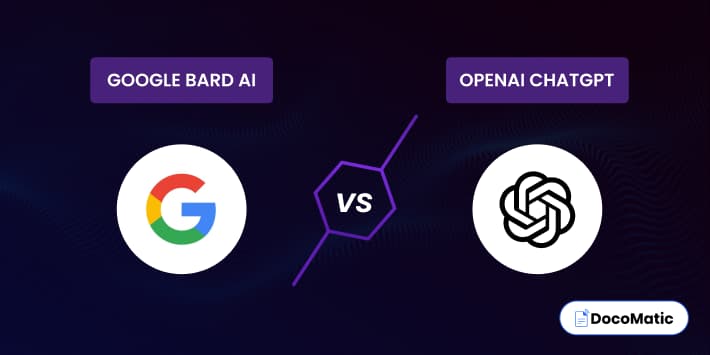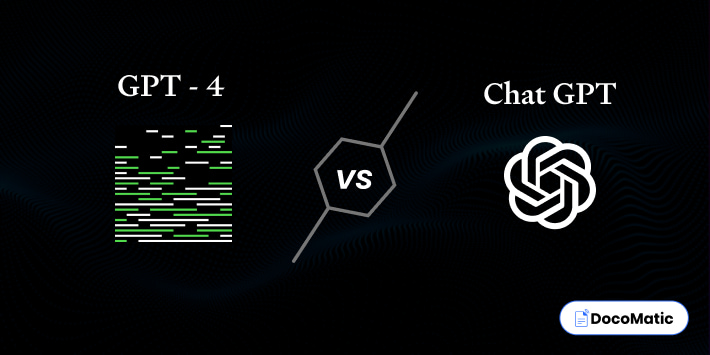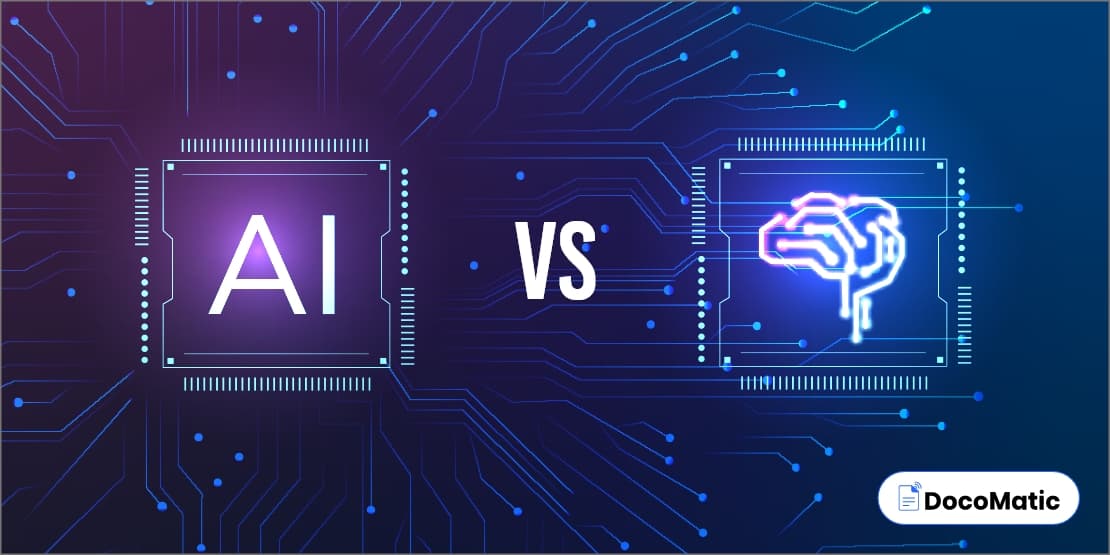When ChatGPT made its first debut on the internet in November 2022 it came in with a bang. The world had never witnessed such an advanced AI chatbot be available in the public domain for free. So much so that it became the fastest website to reach 100 million daily visitors.
There is no doubt that other tech giants are working on their very own AI-powered chatbots. One such giant is Google which has been testing its own take on ChatGPT called Google Bard. Bard is based on LaMDA, a language model that was built by Google with over 137 billion parameters, making it quite formidable against the GPT-3 model powering ChatGPT.
Seeing ChatGPT and Google Bard, two giants in the AI sphere, the clash was indeed going to be thrilling and left us wondering about the potential they bring to the table for individuals and businesses alike.
Let us look at the powers of these two AI chatbots and see how they stack up against each other.
Table of Content
Google Bard vs ChatGPT
A comparison between these two AI language models is very well deserved as they could hold the potential to change the world as we know it. The comparison will be going over all the various facets that may be of significance to any given user.
1. Accessibility
One of the biggest limitations of Bard AI is the fact that it is only accessible to a select few beta testers and is not fully open to the general public. This heavily affects the comparison as there is no way to measure the capabilities of Bard AI against ChatGPT.
Meanwhile, Open AI’s ChatGPT, a natural language processing model, has been widely available to the public free of cost for months, allowing users to push the AI to its limits. The access convenience offered by ChatGPT is truly unparalleled in this industry.
2. Features
While both models are known to provide relatively accurate answers to any given query, generally chatbots are known to offer some other sophisticated features as well. One such example is ChatGPt’s ability to fix incomplete bits of code or program new bits of code based on text prompts.
It also supports multiple languages and can translate any given prompt from select languages. However, it is not fair to assume that the public version of Google Bard will not share these abilities as it has not yet been made available.
3. Pricing
Having an AI language model answer your query costs a lot more than doing the same on search engines. Naturally, this would make you assume that these AI chatbots are going to be very heavy on the wallet for almost any use case.
The truth however begs to differ as ChatGPT is open to the public free of cost. However, you will encounter some limitations that can be fixed by upgrading to the ChatGPT plus variant which costs $20 every single month. Bard AI does not have any pricing info as it is in its final testing phase.
4. Accuracy
The accuracy of these artificial intelligence models has always been under scrutiny and for good reason as some of the responses provided by an AI-powered chatbot can be very unhinged and inaccurate. This is due to the inherent functioning methods of these chatbots.
Companies that work on AI tools acknowledge this fact and thus request users to take the responses given by chatbots with a grain of salt. Both OpenAI and Google announced such disclaimers to their user base during the time of their usage.
5. Applications
There is no doubt in the fact that OpenAI’s ChatGPT has seen far more applications when compared to Google’s Bard. The reason for this greater usage can be attributed to OpenAI making their language models and API so readily available to developers.
This is why the GPT language model has seen such widespread use from being integrated with the Bing search engine to powering entire AI applications that generate high-quality text. So in terms of applications OpenAI and ChatGPT clearly have the lead on Google Bard.
6. Technology
The technology behind the two AI chatbots is also very different as they are based on two completely different language models. ChatGPT uses GPT-3, a natural language processing tool developed by Google, meanwhile, Google Bard uses the LaMDA model, both being developed in-house.
The key differences between the chatbots lie in their method of training. For example, ChatGPT utilizes reinforcement training methods, meanwhile, Bard is said to use a more standard transformer that is trained on dialogues.
6. Capabilities
Considering the capability factor, both ChatGPT and Bard are capable of generating incredibly human-like responses to a wide range of inputs. ChatGPT, a cutting-edge natural language processing model, can help you give precise responses to a wide range of input.
The tasks that ChatGPT can accomplish include language translation, sentiment analysis, text summarization, and more. However, one of the most striking features, apart from the above-mentioned NLP tasks, is its ability to write in a diverse tone and voice, making it a powerful model.
Factors to Keep in Mind when Comparing AI Chatbots
Several factors are at play when selecting the best product regardless of category, why should AI be any different then? In fact, the factors that contribute to making an AI product good or bad are far more complex and demand deep introspection and research from users.
1. Use case
The best AI chatbot will primarily depend on what you intend to use it for. There are many chatbots that excel greatly at their specialization but leave more to be desired in other areas. This is why it is crucial for YouTube to first assess what your use case is.
Performing an assessment of your requirements will not only help you feel more confident when looking at AI options but will also show you options that might have been previously overlooked.
2. Testing
Before you pull the trigger on just about any chatbot on the market, it is advised that you take some time to see how it performs for your applications. There are also cases where the chatbot has not been in the public domain for long which also degrades your ability to judge it fairly.
To know which chatbot is the right option for you it is best to not rely on on-paper data and instead directly use it firsthand to explore and know its potential fully.
3. Company background
Knowing the company that has built an AI chatbot is as important as knowing the functions of the chatbot as they are the ones that control how the AI evolves over time. Some AI development organizations have a great track record of offering timely updates.
Meanwhile, others are notorious for barely launching updated versions of their AI models that are competent with the current generation. To have a sustainable and reliable AI solution at your side it is important to take a closer look at the parent company’s history.
Why are Other Alternatives not Popular?
Given the success of ChatGPT in the modern era, many wonder why any other conversational or generative AI chatbot has not risen to compete. Well, the reason for this can be distilled down to pure hype and accessibility. OpenAI created quite a buzz and gained a lot of traction online.
They also capitalized on the opportunity to make their chatbot as accessible as performing a regular google search which led to more and more users experiencing its potential. This increased usage led to the discovery of newer applications that further boosted ChatGPT’s success.
All of the other conversational chatbots such as Chinchilla and Chatsonic are thrown out of the water by ChatGPT despite their unique functions solely because of how popular ChatGPT is. This gives OpenAI a significant headstart when launching new products.
The only way for any company to threaten ChatGPT’s reign in the AI world is by either being very popular or launching a powerful product. This is why Google’s Bard AI has been so successful in drawing attention to itself.
FAQs
Google BARD’s AI model is structured to generate users’ relevant queries and up-to-date answers on a real-time basis. On the contrary, ChatGPT relies on training data that is compiled from Common Crawl, Wikipedia, books, articles, documents, and open internet content. However, the most recent information it can access only reaches up until 2021.
OpenAI has so far released 4 versions of the GPT model. GPT 1 was released in the year 2018, followed by GPT 2 in the year 2019, as a successor to the initial model. Subsequently, after the launch of GPT 2, OpenAI unveiled GPT 3, and thereafter a release of GPT 3.5 before the launch of GPT 4.
The GPT-3 release has marked a significant leap in AI capabilities and garnered widespread attention for its remarkable language generation abilities.
Yes, language models and chatbots from Google have been equipped with multilingual capabilities allowing them to be used by a wider variety of users. This also allows it to perform more complicated tasks such as perfect translation.
While AI chatbots can drastically speed up the process of creating content, it is a terrible idea to use them for any content that is original or niche as it usually only provides generalized information. To stand out in any given field it is recommended that you focus on creating original content that cannot be easily replicated.
Much like with any product under development, Bard is in its last phase of beta testing and thus is not available to the public. This is to ensure that Google is able to launch a perfectly functional AI chatbot that does not have any serious issues that the users may find alarming.
The companies that have developed the AI chatbots themselves advise users to not fully believe the text generated by AI as they could have a slight margin of error. Regardless, some companies are hellbent on integrating AI-generated text for written content as it is much faster and easier while allowing for some extra creativity.
Conclusion
While Google Bard stands as a worthy adversary to OpenAI’s ChatGPT it is essential to understand that neither are fully fleshed-out products. Both ChatGPT and Bard are constantly undergoing improvements and tests to see what works best.
This is why it is very difficult to say which chatbot has superior capabilities as only time will tell who comes out on top. Unlike other products in the tech world, it is very difficult to predict how the AI tide will shift as there are other powerful competitors to both Bard and ChatGPT.
For now, the biggest player is OpenAI with ChatGPT as they have managed to capture a massive chunk of the market. Primarily by making their products highly accessible to the general population without a massive price tag.
Rakesh Patel is the founder and CEO of DocoMatic, world’s best AI-powered chat solution. He is an experienced entrepreneur with over 28 years of experience in the IT industry. With a passion for AI development, Rakesh has led the development of DocoMatic, an innovative AI solution that leverages AI to streamline document processing. Throughout his career, Rakesh has trained numerous IT professionals who have gone on to become successful entrepreneurs in their own right. He has worked on many successful projects and is known for his ability to quickly learn and adopt new technologies. As an AI enthusiast, Rakesh is always looking for ways to push the boundaries of what is possible with AI. Read more


